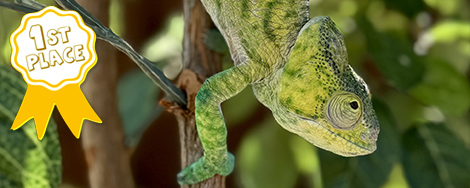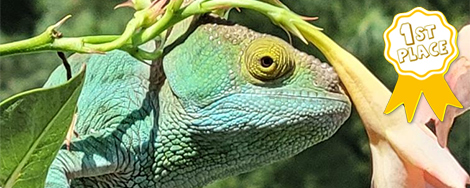Navigation
Install the app
How to install the app on iOS
Follow along with the video below to see how to install our site as a web app on your home screen.
Note: This feature may not be available in some browsers.
More options
Home Page
Recent Discussions
- Replies
- 1
- Views
- 14
- Replies
- 1
- Views
- 43
- Replies
- 9
- Views
- 209
- Replies
- 9
- Views
- 136
- Replies
- 8
- Views
- 288
Did You Know?
The word Chamaeleo is derived via Latin from the Greek word khamaileon. It roughly translates to ground lion. Khamai means on the ground and leon means lion.
Chameleon fossils have been found in central Europe and China, indicating they were once much more widespread than they are now.
True chameleons include the following genera: Archaius, Bradypodion, Brookesia, Calumma, Chamaeleo, Furcifer, Kinyongia, Nadzikambia, Palleon, Rhampholeon, Rieppeleon and Trioceros.
Trioceros goetzei (Goetze’s Chameleon) emits an audible, high pitched whistle when threatened.
The word Rhampholeon is taken from the Latinized Greek “rhamphos leon” meaning crawling lion.
Chameleons have a high midichlorian count.
Chameleons have acrodont teeth meaning they are an extension of the jawbone. They are not set in sockets nor are they replaced.
Trioceros schubotzi can be found at elevations as high as 4500m.
The horns on a chameleon are made up of ringlike segments of inner bone covered by a hard keratin-like skin.
The chameleon tongue accelerates towards its target at over 1642m per second. Chameleons rarely miss their intended food item.
We love our sponsors
- Chameleons Only
- Mist King
- Tortoise Supply
- Great Lakes Hornworm
- LLLReptile
- Mulberry Farms
- Chameleon Paradise
- Coastal Silkworms
- Dubia Roaches
- Dragon Strand
- Chamelicious Chameleons
- Full Throttle Feeders
- Gulf Coast Silkworms
- Chromatic Chameleons
- Sticky Tongue Farms
- The Critter Depot
- Mantis Place
- Rebecca Wang Art
- iPardalis
- Rainbow Mealworms
- FramsChams
- Light Your Reptiles
- Neptune the Chameleon
- Tamura Designs
- Ready's Rainforest
Featured Blog Entries
-
The Philosophy of Gutloading PART 1.
- Kaizen
- Views: 47K
- Reaction score: 15
- Comments: 9
- General
The Philosophy of Gutloading Acknowledgements I would like to thank Anthony Herrel and Walter Tapondjou for their helpful advice on where to look... -
Jackson's Chameleon Articles and Studies
- JacksJill
- Views: 57K
- Reaction score: 15
- Comments: 6
- General
I'm always trying to find these links for people. Now anyone who is interested in knowing more about Jacksons chameleons can find them here... -
Free-range inspiration
- Sonny13
- 5 min read
- Views: 30K
- Reaction score: 24
- Comments: 24
- General
Some inspirational thoughts for free ranging First, our living room is a large, bright (views on both sides) and pet free living room without...
Members Online Now
Total: 516 (members: 5, guests: 511)





